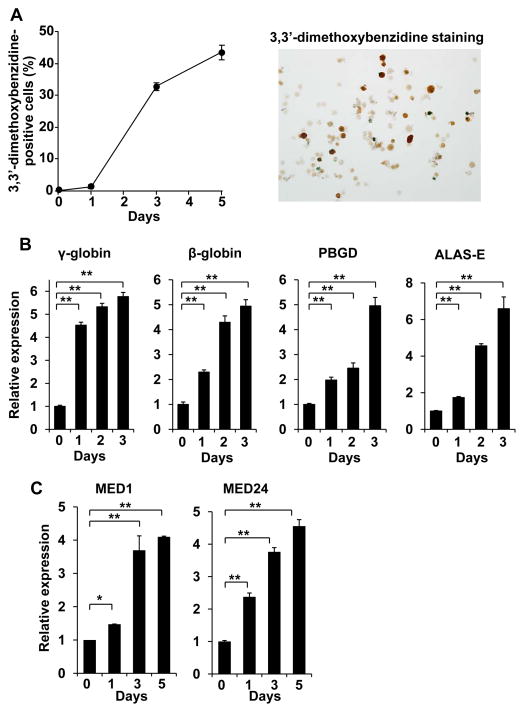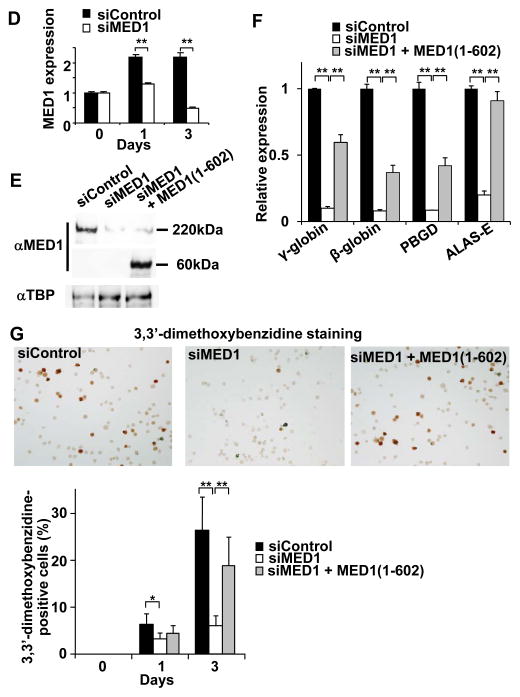Figure 1. MED1 requirement for GATA1-targeted gene transcription and erythroid differentiation in K562 cells.
(A) Erythroid differentiation of 3,3′-dimethoxybenzidine-treated cells. Approximately 45% of cells differentiated after 5 days of treatment. Values (mean ± SD) from a representative experiment performed in triplicate are shown.
(B) Induction of GATA1-targeted gene transcription. Values (mean ± SD) from a representative experiment performed in quadruplicate are shown (**p < .01). Representative GATA1-targeted genes were induced during cell differentiation.
(C) Results of quantitative RT-PCR of MED1 (left panel) and MED24 (right panel) are shown. Values (mean ± SD) of a representative experiment performed in duplicate are plotted (*p < .05, **p < .01). Transcription of the genes encoding the Mediator subunits MED1 and MED24 are induced during differentiation of cells.
(D) Results of quantitative RT-PCR of MED1 after transfection with MED1 or control siRNA are shown. Values (mean ± SD) of a representative experiment performed in duplicate are shown (**p < .01). si, siRNA.
(E) Results of western blot analyses of MED1, and TBP as a control, 2 days after transfection with MED1 or control siRNA, and siRNA-resistant hMED1(1–602) expression vector are shown. α, anti.
(F) Reduced GATA1-targeted gene transcription 3 days after transfection with MED1 siRNA. Simultaneous expression of siRNA-resistant hMED1(1–602) partially rescues the GATA1-targeted gene transcription. Values (mean ± SD) of a representative experiment performed in quadruplicate are shown (**p < .01).
(G) Attenuated erythroid differentiation after transfection with MED1 siRNA. The siRNA-resistant MED1(1–602) rescues the attenuated erythroid differentiation. Control siRNA was used as a control. Values (mean ± SD) of a representative experiment performed in quadruplicate are shown (*p < .05, **p < .01).
The results were reproducible in three independent experiments.


